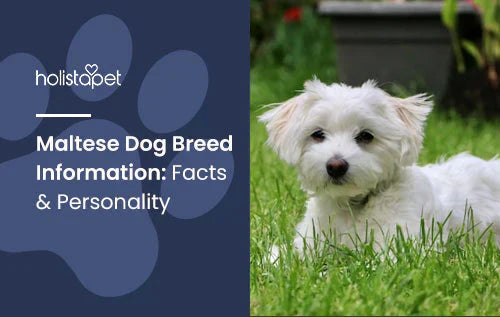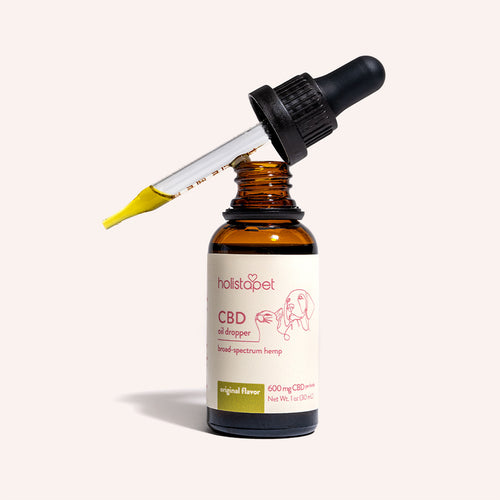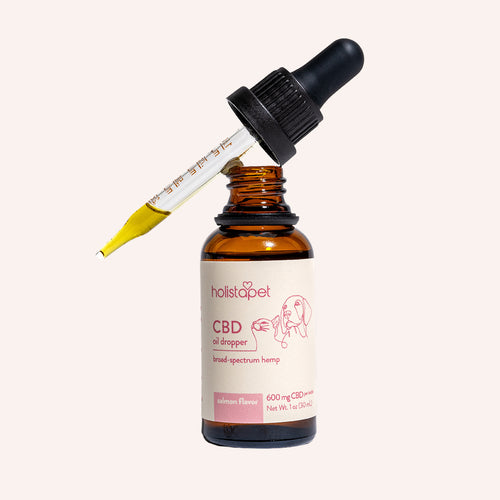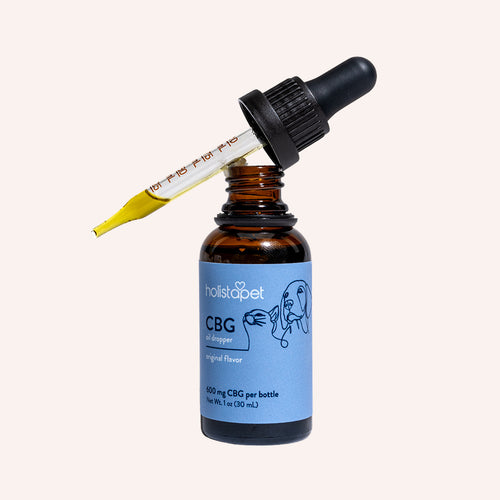If you're looking for a friendly dog with elegance and charm, look no further than the Maltese! With their silky, pure white coats and warm temperaments, it's no surprise that they've made popular companions for people for centuries. People fall head over heels for this breed because of its adorable look, but their loyal personality makes them a fantastic option for anyone that's looking for a canine friend. You will find no lack of adorableness, loyalty, or intelligence in this famous toy dog breed.
Maltese Characteristics
The most distinctive feature of the Maltese dog is the breed's floor-length, silky, white coat. The long hair can grow to cover the dog's short limbs, giving the appearance that it's floating along the floor in a cloud of fur. Due to the lack of an undercoat, Maltese doesn't shed much. The fur is hypoallergenic, so this dog breed is a good choice for people who suffer from allergies.
Though the coat is the breed's most defining feature, other traits contribute to the Maltese’s signature look. Droopy ears, dark eyes, and a black nose are hallmark characteristics of the breed. In addition, they are known for their slightly rounded skulls, compact bodies, and curled tails.
A ring of darker pigmentation, called a "halo", surrounds the eyes and gives the dog an adorable, expressive look that's not common to other dog breeds. The nose can pale and turn to a lighter brown or pink color in an environment that lacks sunlight. The front legs are completely straight and sturdy, while the hind legs are slightly angled at the stifles (knees) and hocks. The toe pads are typically black and very sensitive to the touch.
Maltese Size
The Maltese dog can grow to 7-10 inches tall at the shoulder (21-25 cm). The males tend to be taller than females. The breed's length often equals its height, making the body well-proportioned. The Maltese weighs about 7 pounds (3 kg) on average, but healthy adults can weigh anywhere between 3-10 pounds.
Maltese Personality
Maltese are an exceptionally friendly and intelligent dog breed. They are very trusting of people, even as puppies. Their trusting and social nature doesn't just extend to people - they are often friendly with other canines and pets as well. This feature makes the breed an excellent choice for families with multiple pets. The Maltese is generally a curious, energetic, and playful dog breed.

The intelligence and trusting nature of the Maltese dog makes them easy to bond with, and even easier to train. They respond very well to positive reinforcement. You can get your Maltese to master a ton of tricks in no time, as long as you reward them with plenty of praise and love (and treats!).
Maltese dogs thrive on human interaction. They crave attention and can get lonely or anxious if they don't get enough interaction with their owners. This breed loves to be cuddled and held, and their small size makes them perfect for the job. These traits make the Maltese a fantastic therapy dog for people needing emotional support. They are also loyal and keen to danger, making them reliable watchdogs.
Maltese Exercise
Although Maltese have a high energy level, they require little exercise. A simple daily walk or active play session (of about 20 minutes) will be enough to keep this breed healthy. Because Maltese dogs are so small, they don't need a lot of space to run around. This makes them an ideal apartment dog. However, they are quite active even when they're indoors, so dog-proof furniture is recommended.
A Maltese dog will likely remain playful and active in its old age. It's important that owners continue to walk and play with this breed even when it's older since exercise plays a crucial role in the dog's health. Maltese dogs don't slow down as quickly as some other dog breeds do, so owners should do their best to make sure their dogs get enough physical activity.
For puppies, it is best not to take them on long walks or engage in excessive exercise until they are over 8 months old. This ensures that their bone development completes without any complications caused by over-exercise. If you take your adult Maltese on long walks, it's advised that you give the dog a break about every 20 minutes.
Maltese Training
Maltese will take to training quickly if they are rewarded often with CBD treats for dogs or praise. Since they are a very intelligent breed, they learn cues and tricks easily. However, their intelligence also makes them adept at finding ways around rules and manipulating people into giving them what they want.
Establish Authority
Maltese can become stubborn and spoiled if they get the idea that they're in charge. Always make sure you establish your authority and keep their problematic behaviors in check. Training should be an ongoing process for Maltese; don't stop after you've taught them basic commands.

Crate Training
A common issue that Maltese dogs experience is separation anxiety. This occurs because the breed is naturally very social and requires a lot of attention from its owners. You can train Maltese to tolerate separation by crate training them at an early age.
Crate training is accomplished by leaving the dog alone in a comfortable crate for short periods of time. After a while, you can gradually prolong the time in the crate. You should always reward the dog for going to the crate to establish a positive relationship with the isolation and reinforce the behavior. Do not punish the dog for leaving the crate.
Vocal Training
Another issue that you may need to address with additional training is the Maltese's tendency to bark. This breed is the most vocal when they feel anxious or they're being protective of their owner. Though this is natural for most dogs, Maltese can become overactive if they're not socialized or trained well as a puppy.
Teaching your Maltese a 'quiet' command will curb this behavior and save you from a lot of headaches. When the dog stops barking on their own, say the word "quiet" and give them a treat. This will build an association between the silence, the command, and the reward. After about a week of doing this, try to give them the "quiet" command while they are barking. If they stop barking after you give the command, be sure to reward them with a treat.
Maltese History
The Maltese is one of the oldest toy breeds in history. The first Maltese records date all the way back to the times of Ancient Rome and Greece. They were especially popular in Greek, Roman, and Egyptian cultures - this has been well-documented by the tombs and artifacts that these civilizations left behind. The famous thinker Aristotle often wrote about the dog's perfect proportions.
The breed is thought to have originated on the island of Malta, a rocky island about 60 miles off the southern coast of Sicily. Malta was a thriving seaport in the middle of the Mediterranean; travelers of many kinds passed through with a variety of goods, commodities, and animals. The island was conquered many times by various empires - the Greeks, Romans, Normans, Carthaginians, and the Phoenicians. It's thought that the Phoenicians, who controlled the Mediterranean region prior to the Greeks, were the ones that brought the first Maltese to the island.
The breed became very popular amongst noble ladies in the Roman empire for their elegant look. In fact, Roman women wore Maltese dogs as fashion accessories in their sleeves or bosoms, earning the breed the name "Roman Ladies' Dog." After the fall of the Roman Empire, the Chinese took a liking to the breed and mixed it with the Tibetan terrier and other Eastern breeds.
In more modern times, the American Kennel Club first recognized the Maltese in 1888 as the "Maltese Lion Dog" because of its majestic appearance. Since its registration, this breed has grown in popularity and competes in shows worldwide.

Health Issues
Like other toy breeds, Maltese are prone to certain health issues. However, some of these conditions can be prevented if you keep up with routine care and checkups. Getting a record of your dog's lineage from its breeder will give you a better idea of what illnesses run in their genes, though this isn't always possible if the dog came from a shelter or rescue.
Stomach Issues
Other common health conditions Maltese face affect their intestines. The breed can also develop severe food allergies and sensitivities. Swollen bowels occur when your dog's intestines become overactive with lymphocytes and plasmacytes. These are immune cells that attack harmful organisms in your dog's gut, but they can cause vomiting and diarrhea when they become overactive. Diet and lifestyle changes will help this condition.
Tooth Issues
Maltese are especially prone to tooth issues. It's important to address dental problems right away because they can spread to your pet's kidneys, liver, heart, or joints if left untreated. Brushing your Maltese's teeth daily to remove tartar buildup will help prevent tooth issues before it begins, and keep your dog's teeth in its mouth where they belong.
Related: Home Remedies for Tooth Decay in Dogs [Actionable Tips]
Shaker Syndrome
Another neurological condition common to Maltese dogs is Shaker Syndrome. This condition is found in other toy breeds as well like terriers and poodles. It's identified by episodes of tremors that worsen with exercise or excitement. The tremors can affect one part of the body or the entire body.
How to Care For a Maltese
Maltese are the happiest and healthiest when they receive adequate attention, training, and grooming from their owners. These dogs are one of the most loyal and intelligent breeds on the planet, so it will be very rewarding to see them happy and alive for as long as possible. Taking the extra time to ensure their health will be well worth it in the end.
Giving your Maltese lots of love and affection is important for their wellbeing. This breed is naturally social and they need people to comfort them. A Maltese that lacks socialization is prone to anxiety and in the worst case, aggression. They can become fearful of people or animals they're not familiar with. Make sure you interact with your Maltese every day.
Nutrition and Feeding
A Maltese should be fed twice a day - in the morning and at night. Feeding twice a day instead of leaving food out all the time keeps your pet from overeating and getting fat. It's also best to measure out food portions to ensure you are not over-feeding your Maltese. The recommended amount for pet of dry food is 1/4 to 1/2 cup daily.

It is best to avoid foods that contain artificial colors, preservatives, or flavors. Maltese can develop allergies easily, and these ingredients are often the culprits for any adverse reactions. Foods made from primarily whole proteins are ideal because dogs are omnivores that require high amounts of protein to support all the systems in their body. Find a chow that contains a natural source of proteins, carbs, and vegetables. Remember, quality nutrition is important when choosing the right treats and food for your dog.
Coat Color and Grooming
It is standard for all Maltese dogs to have a pure white coat, but variations in coat color on certain parts of the body can exist. Some Maltese may have an ivory tint around their ears, and some yellowish markings may be seen on the fur as well. It's not uncommon for a Maltese to have a curly coat either, although it's considered a deviation for the breed.
For the sake of your pet's health, groom them regularly. A Maltese's appearance can quickly become unruly if not maintained properly, and their general health degrades if you don't take preventative measures. Brush their teeth daily, check their eyes for staining, and make sure their coat is maintained.
Brushing
If your Maltese has a longer coat, it is important to brush it daily. This will help keep it detangled, prevent mats, and ensure your pet looks their best. A short-haired Maltese does not have to be brushed every day, but still, brush them at least once or twice a week to exfoliate their skin and stimulate natural oils.
When brushing a Maltese, make sure you are very gentle and not tugging too hard on their fur. Just like how rough brushing hurts our scalp, forceful brushing will be agonizing for your Maltese and can cause them to become anxious or upset about grooming.
If your Maltese develops a mat, which is a large, tangled mass of fur that hardens into a big clump, try to detangle the mat the best you can with your fingers and a detangling agent. After you've separated as much fur as you can with your fingers, you can try attacking it gently with a comb and more detangling agent. All mats should be removed before bathing because water can make the tangles worse.
Bathing & More
Bathing your Maltese once a week will help keep their coat and skin healthy. Coat conditioners are especially helpful for long-haired Maltese; it will soften their fine, white hair and keep it from tangling.
Finally, a Maltese must have their nails clipped, teeth brushed, eyes cleaned, and ears checked on a regular basis. Maltese are known for their fast-growing nails, so trimming about once or twice a month keeps the growth in check. This breed is also prone to dental diseases, so daily tooth brushing is recommended.

Tear staining is another common issue with this breed; it usually begins when the dog is about four or five years old. Gently wipe away tear stains from your dog's eyes with warm water and a paper towel daily if you notice them, and bring your dog to the vet if the staining becomes excessive. Check your Maltese's ears every week for odor, wax, and extra hair. You may need to pluck extra hair from their ears to ensure their health.
Children and Other Pets
Maltese dogs are very sociable animals. They typically get along well with other dogs and pets, especially if you introduce them at an early age. Socialization is key for a Maltese's nature. Early exposure to other pets in your family will increase the chances of your Maltese getting along with them, although this breed is pretty trustworthy regardless.
However, Maltese are not recommended for families with small children. Since Maltese are so small, children are more tempted to handle them roughly, and this could potentially injure the fragile Maltese. Maltese are patient and friendly and will not be aggressive with kids, but for the dog's safety, some breeders avoid selling Maltese pups to families with small children.
Rescue Groups
There are many groups dedicated to rescuing Maltese dogs. The American Maltese Association Rescue is a nonprofit run by volunteers that care for neglected, abused, or abandoned Maltese dogs around the nation. They rescue from the streets, shelters, and homes. This group ensures each Maltese gets proper veterinary care and places them in foster homes until they can find the perfect adoptive family for the dog.
The Northcentral Maltese Rescue is another nonprofit that operates nationwide. They work to rehabilitate and re-home surrendered Maltese dogs. The group finances all the dogs' veterinary care themselves and relies primarily on public donations.
Maltese Organizations
The American Maltese Association, an affiliate of the American Kennel Club, was organized in 1906. There are currently 250 members in the association in 4 regional clubs. The club holds specialty shows for the breed multiple times a year.
If you are curious about Maltese organizations in your area, try searching on Google for local clubs. For example, the Maltese Club of Southern California works to promote the exhibition and education of the breed. They host events and fundraise for the preservation of Maltese all over the nation.

More About The Maltese Breed
Maltese have plenty of little quirks to them, all of which are adorable! If you own a Maltese yourself, you know there is no end to their personality and uniqueness. The breed has a reputation of being picky eaters, for one. They are also known to jump quite high.
One of the most amusing facts about the Maltese is their utilitarian role as a heating instrument. In ancient times, all the way up till now, this breed has been used to soothe people's pain and discomfort with their body heat. Their compact bodies, loving nature, and soft hair make them into the perfect heating pads. Royals often placed Maltese on their feet to keep them warm, and the dog's heat has been used to treat stomach discomfort as well.
All being said, you can't go wrong with adopting a Maltese. These dogs bring an abundance of liveliness to any home, and you will be happy to watch them grow and thrive beside you for years to come. Useful site.


 CBD Oil for Dogs - Fast Acting
CBD Oil for Dogs - Fast Acting
 Chicken Flavored CBD Oil For Dogs - Easy Dose
Chicken Flavored CBD Oil For Dogs - Easy Dose
 Salmon Flavored CBD Oil For Dogs - Highly Rated
Salmon Flavored CBD Oil For Dogs - Highly Rated
 CBG Oil for Dogs and Cats - Loved by Thousands
CBG Oil for Dogs and Cats - Loved by Thousands




Leave a comment
All comments are moderated before being published.
This site is protected by hCaptcha and the hCaptcha Privacy Policy and Terms of Service apply.